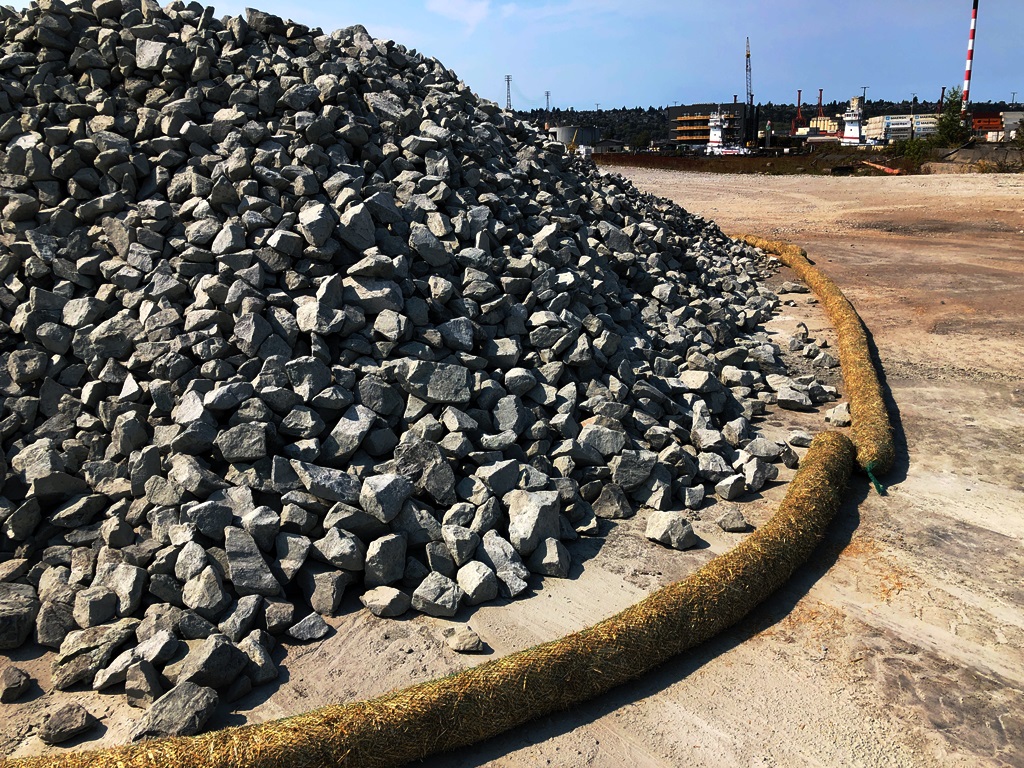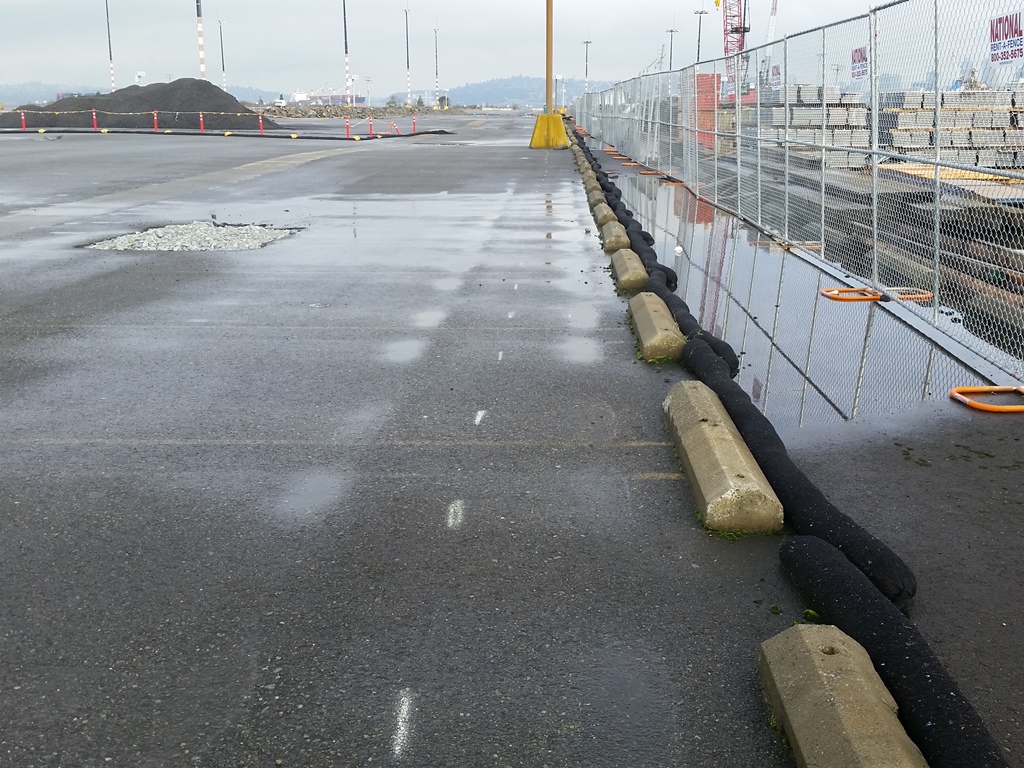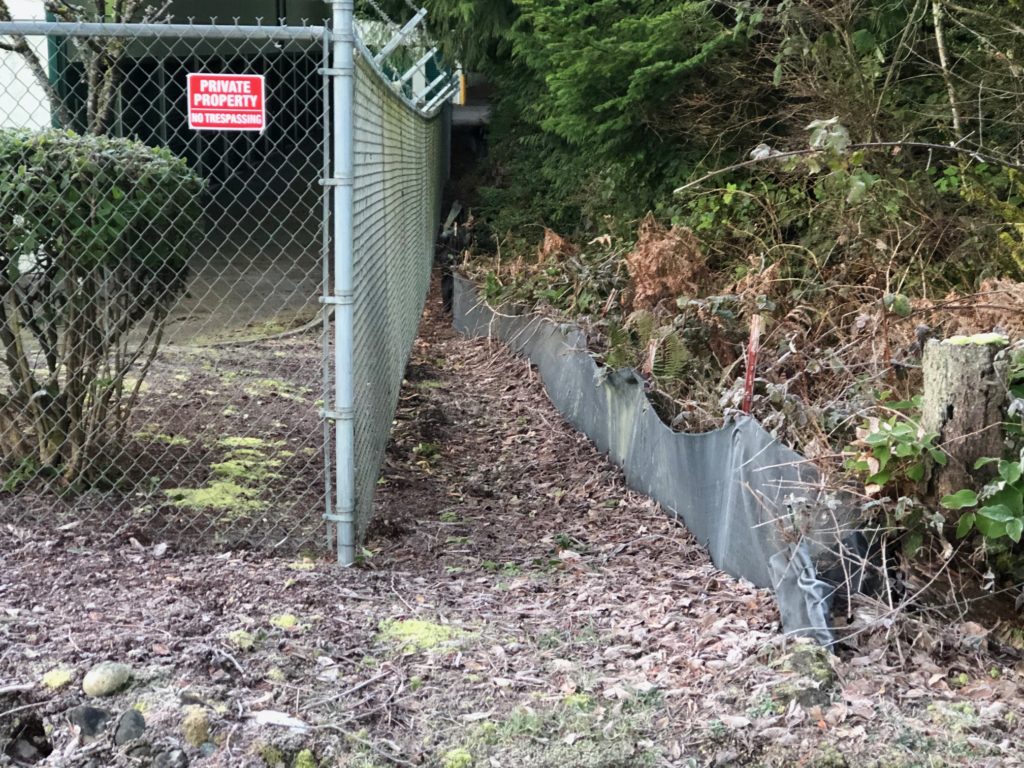Straw wattles reduce erosion when placed on a slope, on contours and at regular intervals. They will intercept flowing water, reducing its velocity and reduce erosion. Straw Wattle Installation Drawing
February 15, 2018
Straw Wattles Reduce Erosion
July 4, 2013
Straw Wattles at Bryce Canyon National Park in Utah
Straw wattles installed on roadside slopes at Bryce Canyon National Park in 2004 still function to hold back erosion and allow vegetation to establish in a harsh, high altitude environment.
September 8, 2020
Biodegradable Wattles
I wrote this biodegradable wattles specification for a riverbank habitat restoration project.
I wrote the last three sentences for this particular project, which has a 2:1 slope above an intertidal river. We will place 12 inches of compost before installing native plants this winter; without the wattles, wet compost will slide to the base of the slope.
BIODEGRADABLE WATTLES
- Wattles shall consist of 100% biodegradable straw, coir, excelsior or compost encased in 100% biodegradable fabric or mesh.
- Wattles shall be a minimum of 8 inches in diameter free of cuts tears and damage.
- The installation of straw wattles shall be per WSDOT Standard Plan I-30.30-00 “Wattle Installation on Slope”.
- Wattles shall be staked in place using wooden stakes a minimum of 16 inches long. The stakes shall be cut flush with the top of the wattles.
- Wattles shall be installed on the Site 25 slope above +12 elevation.
- Wattles shall be installed in two rows across the slope parallel to the 12 + elevation.
- Rows shall be approximately 7 feet above the +12 elevation and 7 feet below the top of the slope.
November 16, 2020
A Final Inspection
I am conducting a final inspection of erosion controls at a former staging area. Some of the best management practices shown are: silt fence, straw wattles, and hydroseed.
September 9, 2020
Berm for Quarry Spalls

This would not have been my choice as a berm for quarry spalls; straw wattles are too light to use on asphalt and they allow water to flow under them. A compost sock, being heavy, would work better, though, they are prone to tearing. An asphalt berm might be best here.
August 24, 2020
Construction Access with Steel Plates
We built a construction access with steel plates across this stormwater swale. Then we laid compost socks and straw wattles along side of the eco blocks placed along the edges.
The adjacent parking lot drains into the swale and must be protected from dirty construction stormwater discharges.
July 28, 2020
Compost Sock Perimeter BMP

The Compost sock perimeter BMP works better than straw wattles on asphalt as they are heavier and make better surface contact.
March 23, 2020
Old Silt Fence

This fence was installed when a storage facility was constructed behind my house. My kids were preschoolers; now they are college age. Why was this installed since everything is level? Why was it never removed? Was this the right choice for a perimeter control BMP? Silt fence is the “go-to” perimeter control. Should it be? There are so many options available: Forest duff and vegetation berm, burlap silt fence with wooden stakes, compost berm, straw wattles, all of which could be left in place to biodegrade after the project is completed.
June 16, 2016
Paying for TESC
The Best Way to Measure and Pay for TESC in Public Works Contracts
It is a big mistake to make temporary erosion and sediment an “incidental” item in a public works contract. Anything that can be measured should be and set up as a Unit Price item. Planning and Implementation can be lump sum but measurement and payment must be clearly specified. Force Account is set up for unforeseen conditions; the amount is set by the owner so that everyone bids the same number. Make clear at the pre-bid meeting that the Lump Sum bid for planning and implementation covers lots of stuff and they need to bid accordingly. Here is an example of the best way to pay: (more…)
June 25, 2015
Low Impact Construction
Low Impact Development for Public Works Construction:
Erosion and Sediment Control Compliance
David S. Jenkins, Seattle, Washington
Introduction
Construction is a messy business; in the Puget Sound region of western Washington, with average annual rainfall of 40″ to 60″, it can also be challenging. Uncontrolled erosion from a construction site can generate 10-1000 times the quantity of sediment that occurs naturally from vegetated areas. Most construction in western Washington occurs near wetlands, streams, lakes, or the Puget Sound where sediment loss can reduce beneficial uses, or worse, destroy a salmon stream.
This paper will discuss proven methods that public works professionals can utilise to improve erosion control compliance and reduce project impacts.
(more…)